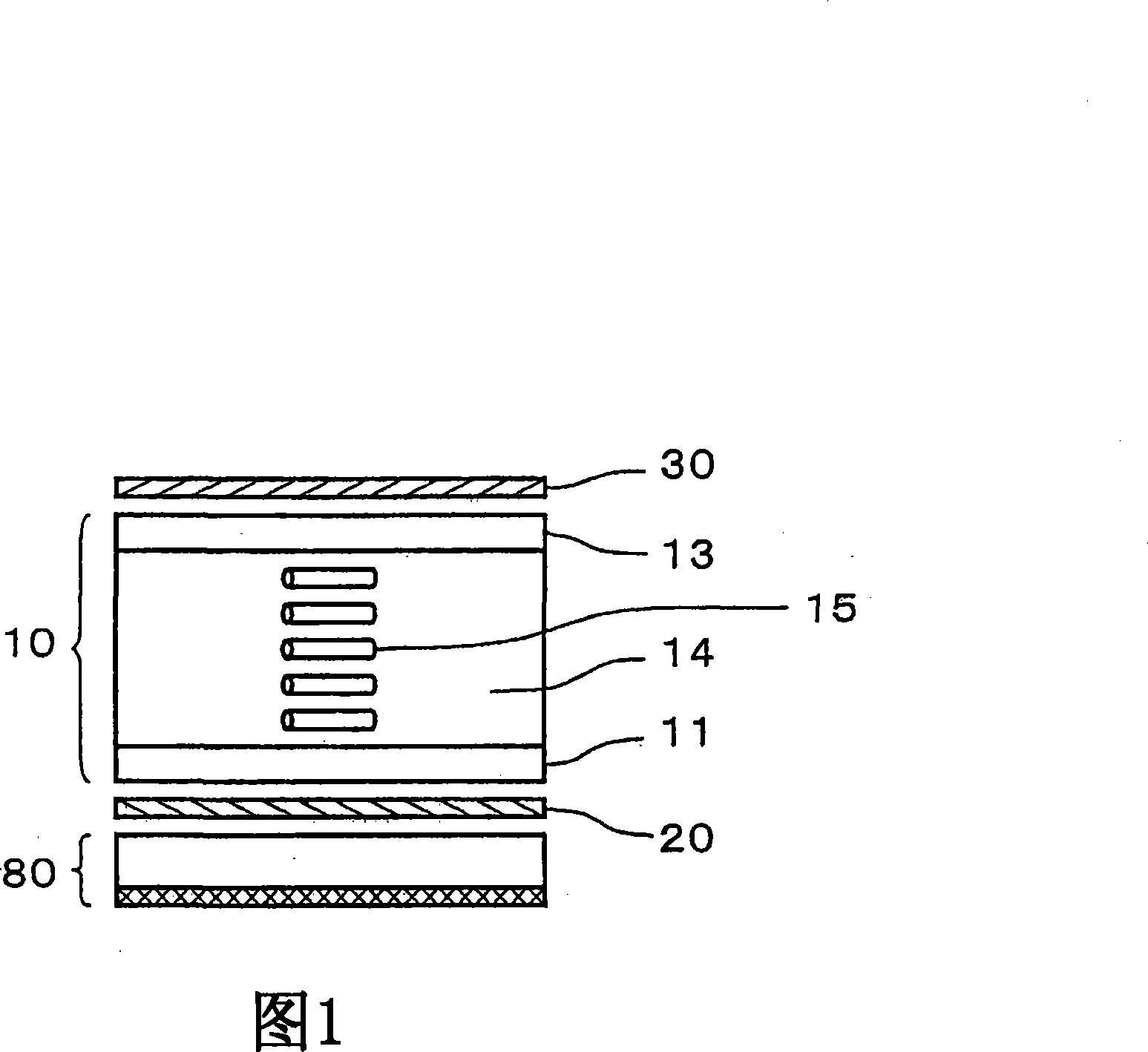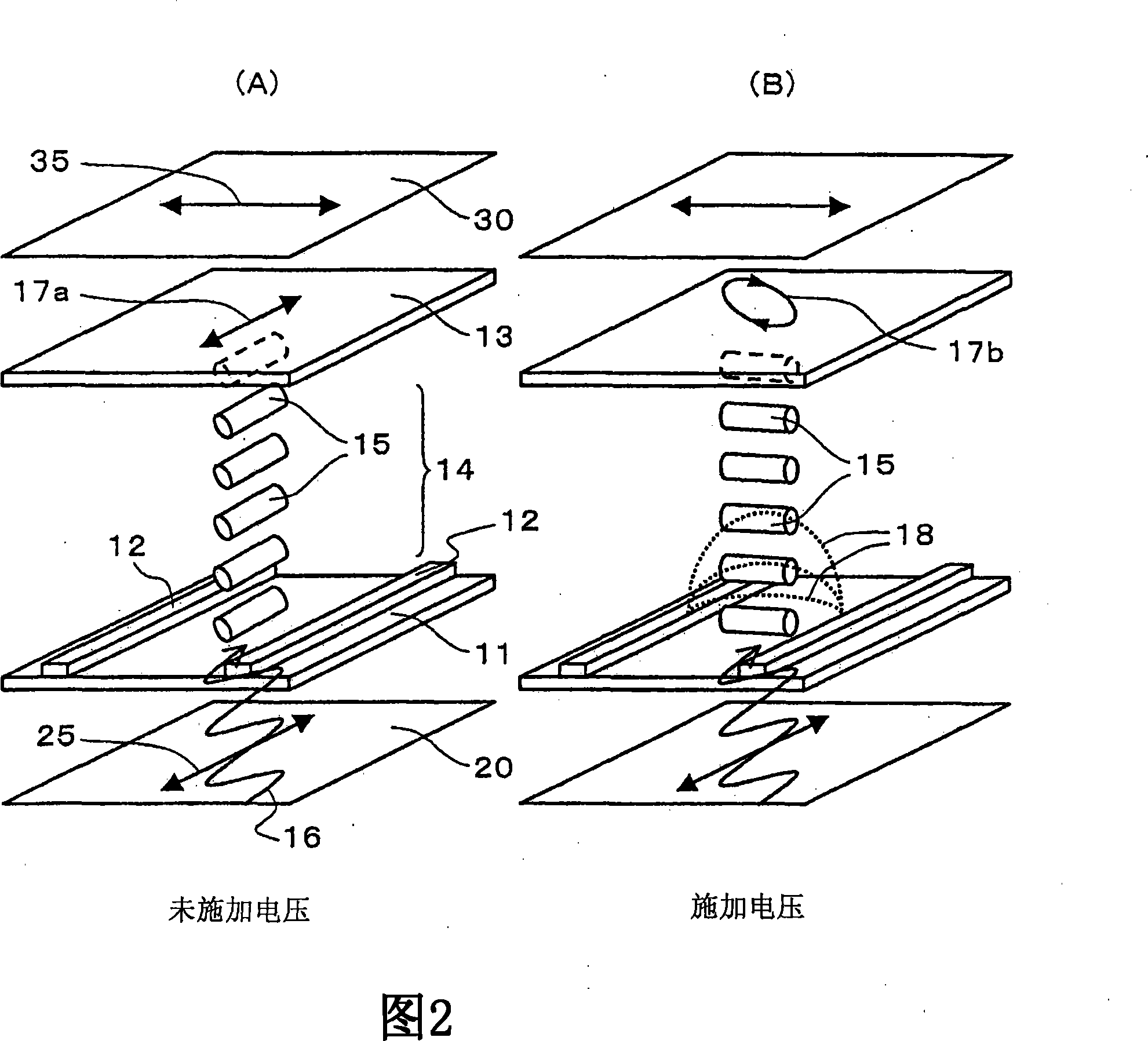Liquid crystal display apparatus and polarizing panel group
A technology of liquid crystal display devices and polarizers, which is applied in optics, polarizing elements, nonlinear optics, etc., can solve problems such as decreased contrast, achieve high contrast, increase contrast viewing angle, and suppress color shift.
- Summary
- Abstract
- Description
- Claims
- Application Information
AI Technical Summary
Problems solved by technology
Method used
Image
Examples
Embodiment 1
[0177] (a) Mold making
[0178] The surface of an aluminum roll (A5056 according to JIS) having a diameter of 300 mm was mirror-polished. On the outer surface of the obtained mirror-polished aluminum roller, zirconia microbeads manufactured by Tosoh Corporation were sprayed at a spray pressure of 0.1 MPa (gauge pressure, the same below) using a spray device (obtained from Fuji Manufacturing Co., Ltd.) TZ-SX-17" (trade name, average particle size 20 μm), forming irregularities on the surface. Electroless glossy nickel plating was performed on the obtained aluminum roll with irregularities, and a mold was made. The thickness of the coating was set at 12 μm, The thickness of the plating layer after plating was measured using a β-ray film thickness measuring device (trade name "Fisher Coup MMS", available from Fisher Instruments Co., Ltd.), and found to be 12.3 μm.
[0179] (b) Production of anti-glare film
[0180] The photocurable resin composition "GRANDIC 806T" (trade name) ...
Embodiment 2
[0217] In the above-mentioned examples, as the front side polarizing plate, the anti-glare film produced by the same method as (b) of Example 1 was directly attached to the viewing side surface of the polyvinyl alcohol-iodine type linear polarizer. The same liquid crystal display device was fabricated using a polarizing plate obtained by using the protective film with its concave-convex surface on the outside, and the same results as in Example 1 were obtained.
Embodiment 3 and 4
[0219] The thickness of the plating layer was changed as shown in Table 2, and a mold having unevenness on the surface was produced in the same manner as in (a) of Example 1. Using each mold, a transparent anti-glare film composed of a laminate of a cured resin having unevenness on the surface and a TAC film was produced in the same manner as in Example 1 (b). The optical characteristics and surface shape (average area of Voronoi polygons) of the obtained antiglare film are shown in Table 2. In addition, for each film, the number of vertices of the protrusions, the arithmetic mean height Pa of the profile curve, the maximum profile height Pt, and the peak position of the histogram of the elevation were obtained in the same manner as in Example 1. The results are shown in Table 3. In addition, using these films, a liquid crystal display device with an anti-glare layer was produced in the same manner as in Example 1 (c) to (e), and the contrast and the anti-glare layer were ev...
PUM
| Property | Measurement | Unit |
|---|---|---|
| area | aaaaa | aaaaa |
| area | aaaaa | aaaaa |
| area | aaaaa | aaaaa |
Abstract
Description
Claims
Application Information
 Login to View More
Login to View More - R&D
- Intellectual Property
- Life Sciences
- Materials
- Tech Scout
- Unparalleled Data Quality
- Higher Quality Content
- 60% Fewer Hallucinations
Browse by: Latest US Patents, China's latest patents, Technical Efficacy Thesaurus, Application Domain, Technology Topic, Popular Technical Reports.
© 2025 PatSnap. All rights reserved.Legal|Privacy policy|Modern Slavery Act Transparency Statement|Sitemap|About US| Contact US: help@patsnap.com



